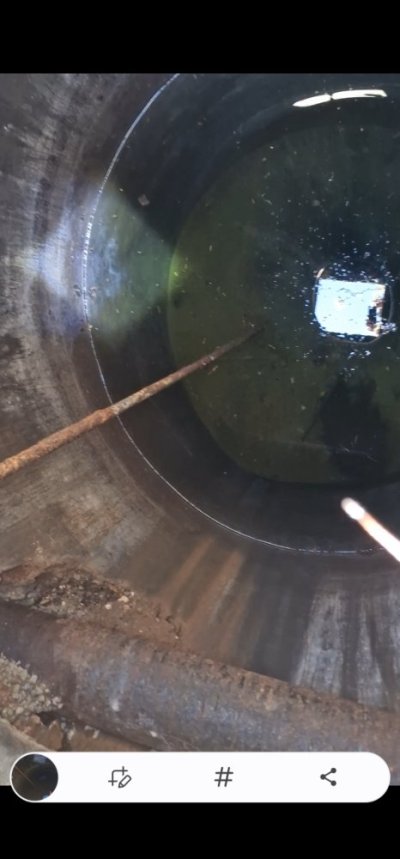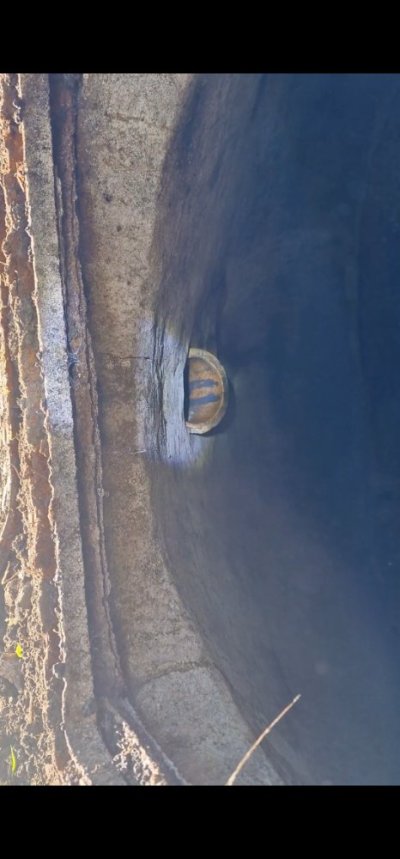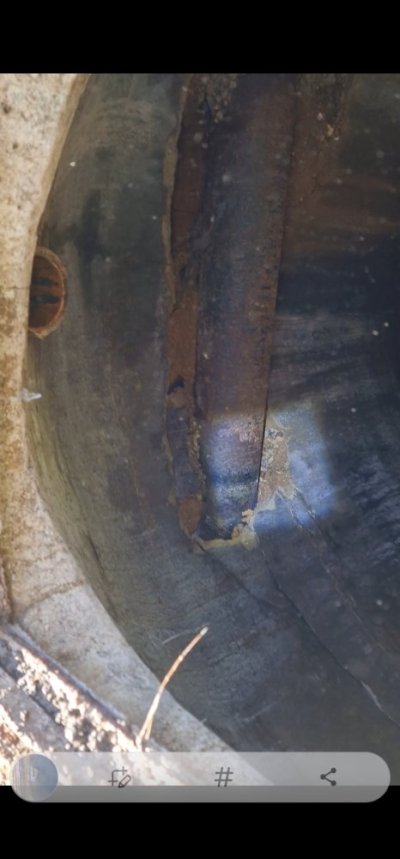thenamesdaryl
Member
- Messages
- 1
- Location
- Canterbury
Hi all, first post here so ill give you a desctription of what / where we are.
Located just outside of Canterbury, Kent
The property is a detached 3 bed house, built around 1905 (found a carpenters signature and date on a floorboard under the stairs). The walls are solid, made of flint and lime mortar, with suspended floors.
The property is sat on a plot of around 0.75 acre, which slopes away from the road to the bottom of the property.
We have recently been infilling a pond in the garden, and discovered a few manhole covers dotted around it. I had to take a look and was quite suprised by what i discovered!
The first cover revealed a chamber, not much larger than the manhole lid and around 3 feet deep. Into this chamber (house side) comes a 6 inch clay pipe quite close to the surface, and the exit from the chamber on the opposite side (away from the house) is about 1 foot below the surface. I quickly grabbed the garden hose and confirmed that the downpipes from the house run into this 'settling' chamber.
The next manhole, about 8 foot downhill from the settling chamber (about 30ft from the house) revealed something much more interesting. A 10-12 foot diamiter, 20+ feet deep cistern. The water level is around 12 feet below surface level, and there is around 8 feet of water in the bottom. The water is clear, and the base looks sandy. I can see the entry from the settling chamber at the top.
The only other notable feature would be an iron rod/pipe, that runs from the domed top all the way to the bottom. Potentially the discharge from an old pump, or an extended valve handle? I couldnt see any evidence of a pump.
from the domed top all the way to the bottom. Potentially the discharge from an old pump, or an extended valve handle? I couldnt see any evidence of a pump.
The sewer main has obviously come later in life, and cuts through the side of the tank... which is intriguing.
I havent any experience with these things, ive done a quick google and can see that most people have brick built cisterns. I think i can see a helical weld line around the sides, leading be to believe this is steel or at least steel lined. The top is a concrete dome.
Has anyone got any knowledge of these systems? I am really interested to learn about it.



Located just outside of Canterbury, Kent
The property is a detached 3 bed house, built around 1905 (found a carpenters signature and date on a floorboard under the stairs). The walls are solid, made of flint and lime mortar, with suspended floors.
The property is sat on a plot of around 0.75 acre, which slopes away from the road to the bottom of the property.
We have recently been infilling a pond in the garden, and discovered a few manhole covers dotted around it. I had to take a look and was quite suprised by what i discovered!
The first cover revealed a chamber, not much larger than the manhole lid and around 3 feet deep. Into this chamber (house side) comes a 6 inch clay pipe quite close to the surface, and the exit from the chamber on the opposite side (away from the house) is about 1 foot below the surface. I quickly grabbed the garden hose and confirmed that the downpipes from the house run into this 'settling' chamber.
The next manhole, about 8 foot downhill from the settling chamber (about 30ft from the house) revealed something much more interesting. A 10-12 foot diamiter, 20+ feet deep cistern. The water level is around 12 feet below surface level, and there is around 8 feet of water in the bottom. The water is clear, and the base looks sandy. I can see the entry from the settling chamber at the top.
The only other notable feature would be an iron rod/pipe, that runs
 from the domed top all the way to the bottom. Potentially the discharge from an old pump, or an extended valve handle? I couldnt see any evidence of a pump.
from the domed top all the way to the bottom. Potentially the discharge from an old pump, or an extended valve handle? I couldnt see any evidence of a pump.The sewer main has obviously come later in life, and cuts through the side of the tank... which is intriguing.
I havent any experience with these things, ive done a quick google and can see that most people have brick built cisterns. I think i can see a helical weld line around the sides, leading be to believe this is steel or at least steel lined. The top is a concrete dome.
Has anyone got any knowledge of these systems? I am really interested to learn about it.



